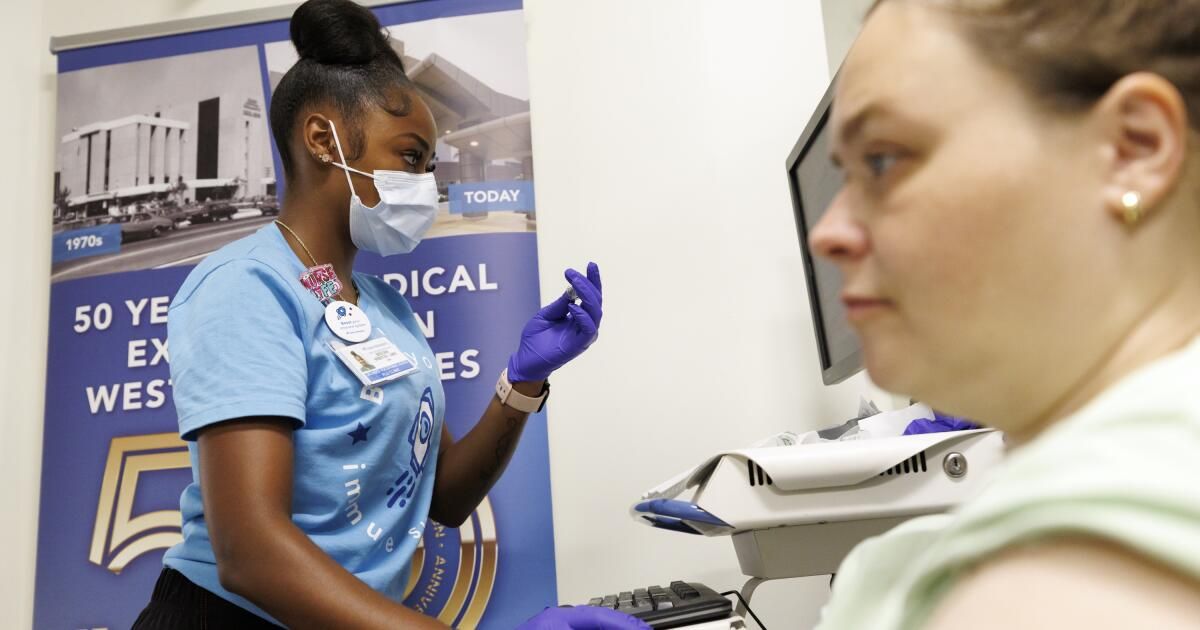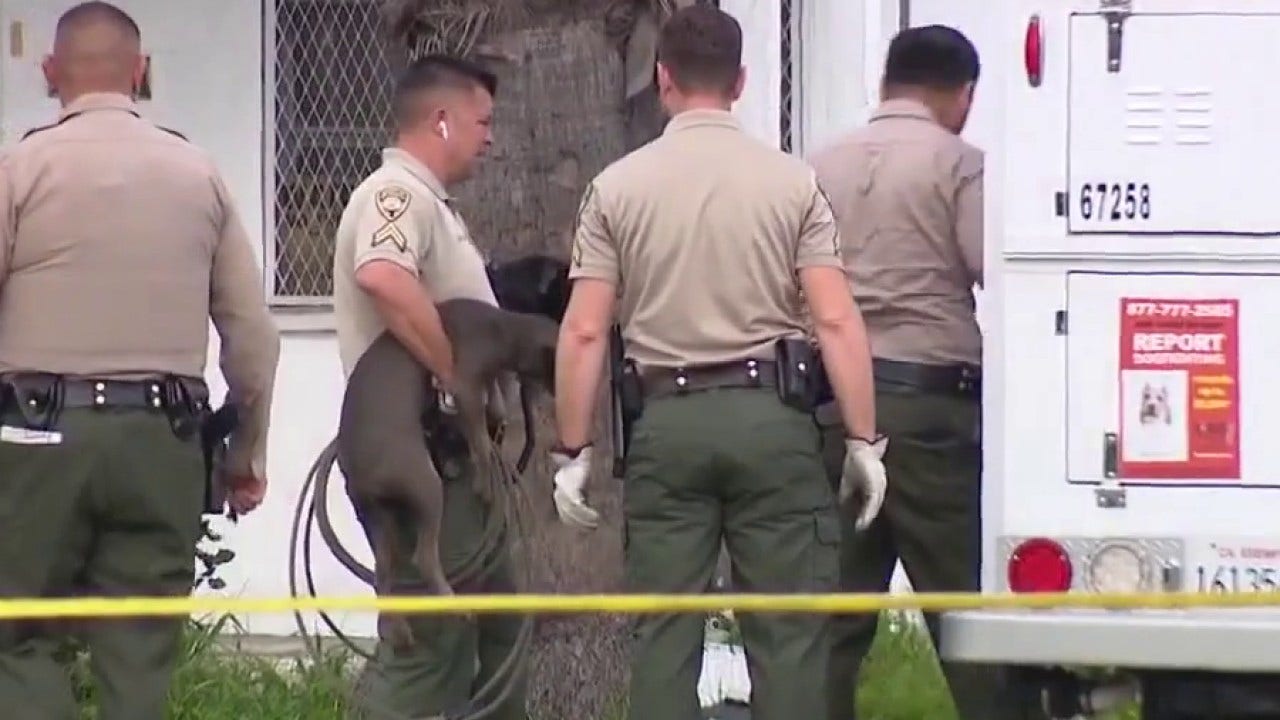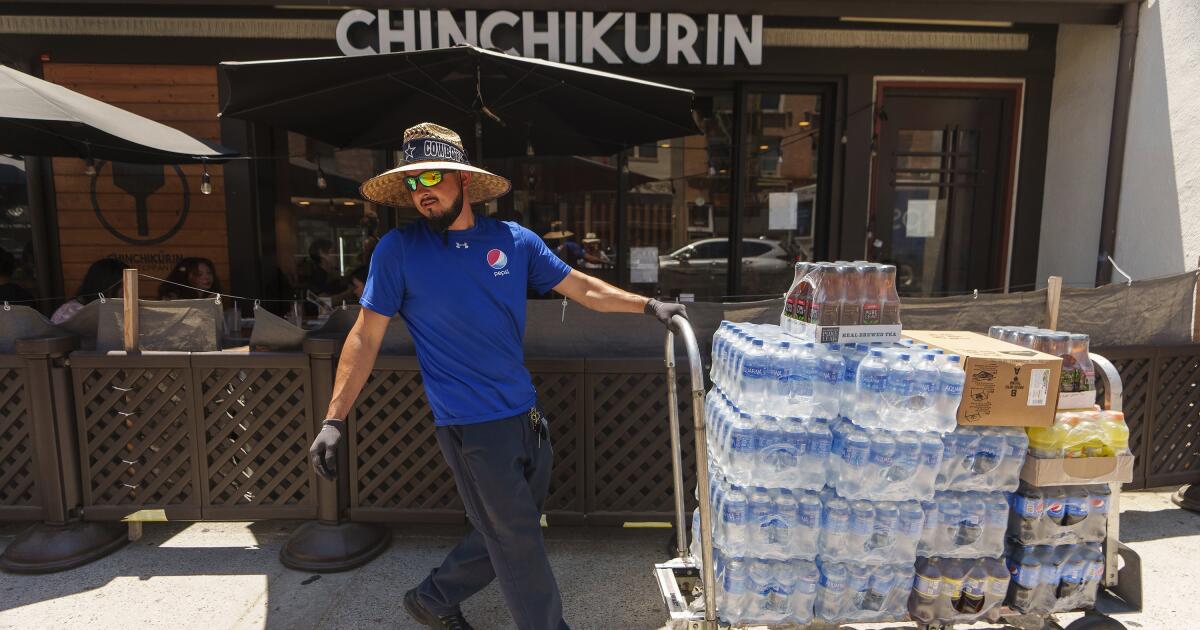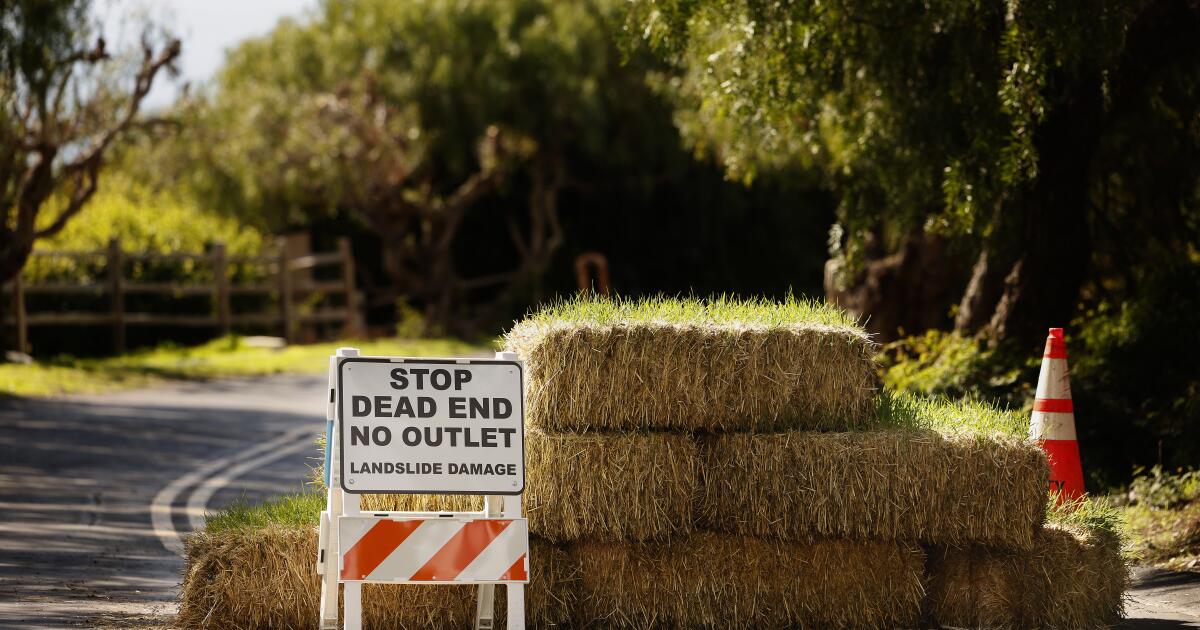A new subvariant of the coronavirus is gaining traction and drawing more attention as a potential threat heading into late fall and winter, a development that threatens to reverse recent promising transmission trends and is prompting doctors to renew their calls for residents to receive an updated vaccine.
XEC, which was first detected in Germany, is gaining ground in Western Europe, said Dr. Elizabeth Hudson, regional chief of infectious diseases at Kaiser Permanente Southern California. Like virtually all coronavirus strains that have emerged in recent years, it is a member of the extended Omicron family, and a hybrid between two previously documented subvariants, KP.3 and KS.1.1.
Previous outbreaks have tended to “move from Western Europe to the East Coast and then to the West Coast of the United States,” Hudson said. “So if this spreads more and more as we get into the colder weather months, this is probably the variant that potentially takes hold.”
So far, XEC has not been widely seen nationwide. According to the U.S. Centers for Disease Control and Prevention, KP.3.1.1, a descendant of the FLiRT subvariants, is the strain predominantly circulating across the country. During the two-week period ending Sept. 14, KP.3.1.1 was estimated to comprise 52.7% of coronavirus samples in the country.
By comparison, the XEC is not yet tracked on the CDC’s variant website. It is estimated that a subvariant must account for 1% or more of coronavirus cases nationwide to qualify.
But there are estimates that XEC accounts for 13% of coronavirus samples in Germany and 7% in Britain, said Dr. Peter Chin-Hong, an infectious disease expert at UC San Francisco.
“We’ll have to wait and see how things play out. If this becomes more common, we’ll probably start seeing it closer to November or December,” Hudson said. “So after Halloween, when the weather probably gets cooler here and people start spending more time indoors, that’s when we’re more likely to see this take hold.”
Any resurgence in the fall or winter, which has become a reliable phenomenon since the emergence of COVID-19, would follow a prolonged surge in the summer that surprised doctors and experts with its strength.
One silver lining, however, is that the timing and strength of the summer COVID surge likely means it could be a couple of months before many people become more susceptible to reinfection, Chin-Hong said.
Last winter’s COVID peak in California—in terms of viral levels in wastewater—was the first week of January.
After a surprisingly sharp surge in the summer, COVID is now declining or likely declining in 22 states, including California and Texas, as well as the District of Columbia, the CDC said Friday.
COVID trends are stable or uncertain in 22 other states, including Florida and New York. COVID is projected to be increasing or likely to increase in New Jersey, Washington, and Massachusetts, and there was no data for the remaining three states.
Still, new COVID infections remain relatively high in many parts of the country. Levels of coronavirus in wastewater are still considered “high” or “very high” in 40 states, including California, Texas, Florida, Illinois, Pennsylvania and Ohio, the CDC said Friday. They were classified as “low” or “minimal” in six states, including New York, Michigan, Nevada and Hawaii.
In Los Angeles County, coronavirus indicators are trending downward. In the 10-day period ending Sept. 7 (the latest data available), coronavirus levels in wastewater were 56% of last winter’s peak. That’s down from the 10-day period ending Aug. 24, when viral levels were 75% of last winter’s peak.
In the week ending Sept. 15, there were 239 coronavirus cases reported per day on average, down 31% from the week before. Officially reported coronavirus cases are an undercount, as they don't account for testing done at home or the fact that many people don't get tested at all when they're sick. But trends are still useful for determining how a COVID wave is progressing.
The share of emergency department visits classified as coronavirus-related in Los Angeles County was 2.8% during the week ending Sept. 15, down from 3.5% the previous week.
However, the average number of COVID-19 deaths is rising, which was expected given the surge in the disease and the lag in reporting deaths. An average of 4.9 COVID deaths were reported per day during the week ending Aug. 27 in Los Angeles County, up from 4.3 the week before.
COVID levels in San Francisco Bay Area wastewater are also stabilizing. Coronavirus levels were considered medium in sewers in San Jose and Palo Alto, and low in Sunnyvale and Gilroy, the Santa Clara County Department of Public Health said.
The rate of positive coronavirus tests is declining in California. In the week ending Sept. 16, 8.9% of reported coronavirus tests (typically those conducted at medical facilities) came back positive. The seasonal peak was 12.8% in the week ending Aug. 10, according to the latest data.
It's still unclear how severe this winter's respiratory virus season will be. COVID isn't the only factor at play, as health officials are also closely monitoring influenza and respiratory syncytial virus, or RSV.
In late August, the CDC predicted that this fall and winter season will be similar to last year’s, or perhaps a little less potent. But that forecast could be too optimistic, the agency warned, if some assumptions are wrong — such as if fewer people are vaccinated than expected.
The situation may improve because people still retain some residual immunity against influenza and RSV, Chin-Hong said, which have been present over the past two winters. Also helping is the distribution of RSV vaccines, which became available last year.
However, every winter brings its own risk of respiratory illness. The circulation of a different type of flu than those included in the vaccine would make those vaccines less effective, for example.
And the experience of some parts of the Southern Hemisphere during its winter suggests that respiratory virus season could be active here, Hudson said.
“Australia had a pretty robust and early flu season, and we’re already starting to see a couple of cases of flu here in the U.S., which is pretty early,” Hudson said.
The CDC recommends that everyone 6 months and older receive up-to-date COVID-19 and flu vaccines. Vaccines are widely available and the best time to get vaccinated is in September and October, according to the CDC.
According to the CDC, after a coronavirus infection, people may consider waiting three months to get the final COVID-19 vaccine. But they can also choose to get it as soon as they feel better.
“I’m always hopeful. And if people get vaccinated — this is the perfect time to get a flu shot and get the new COVID vaccine — we might be able to slow down what will likely be another more typical fall and winter surge. But I think the jury is still out on how severe it will be,” Hudson said.
Getting vaccinated “means fewer sick days and more time with loved ones. We are stronger when we are all protected against respiratory illnesses,” said Dr. Tomás Aragón, director of the California Department of Public Health, in a statement.
Older or immunocompromised people who have not been vaccinated in more than a year are at higher risk of getting seriously ill from COVID and dying, officials say.
Data shows that people who received last year's updated COVID vaccine were 54% less likely to get the disease between mid-September 2023 and January, according to the CDC.
A flu vaccine that is well matched to circulating viruses can also reduce the likelihood of getting sick enough to require a visit to the doctor by 40% to 60%, the CDC said.
There are needle-free options for getting the flu vaccine, such as FluMist, which has been available for many years as a nasal spray for nonpregnant people ages 2 to 49. On Friday, the U.S. Food and Drug Administration approved FluMist for home use, meaning adults can give themselves or their children the vaccine.
A prescription will still be required for the at-home option, which is expected to be available in fall 2025.
According to the CDC, COVID remains a greater risk to public health than the flu. Since October 1, at least 55,000 COVID-19 deaths have been reported nationwide. At least 25,000 flu deaths are estimated to occur during that same period. Flu death estimates are expected to be updated in October or November.
CDC recommends RSV vaccination for all adults 75 years of age and older, as well as those 60 to 74 years of age who are at increased risk for severe disease. However, the RSV vaccine is not annual, so people who received a vaccine last year do not need to get another one at this time.
There is also an RSV vaccine for pregnant women between 32 and 36 weeks of pregnancy to provide protection to their fetuses. There is also an RSV antibody for infants and some young children.
The U.S. Department of Health and Human Services said it will again offer four free mail-in COVID tests to people at home. You can sign up at covidtests.gov starting in late September.
In addition to getting vaccinated, California health officials urged people to take other steps to avoid getting sick and infecting others. These include staying home if you are sick, getting tested for COVID and flu if you are sick, wearing a mask in indoor public spaces, washing your hands, covering your cough and sneeze, and ventilating indoor spaces.












